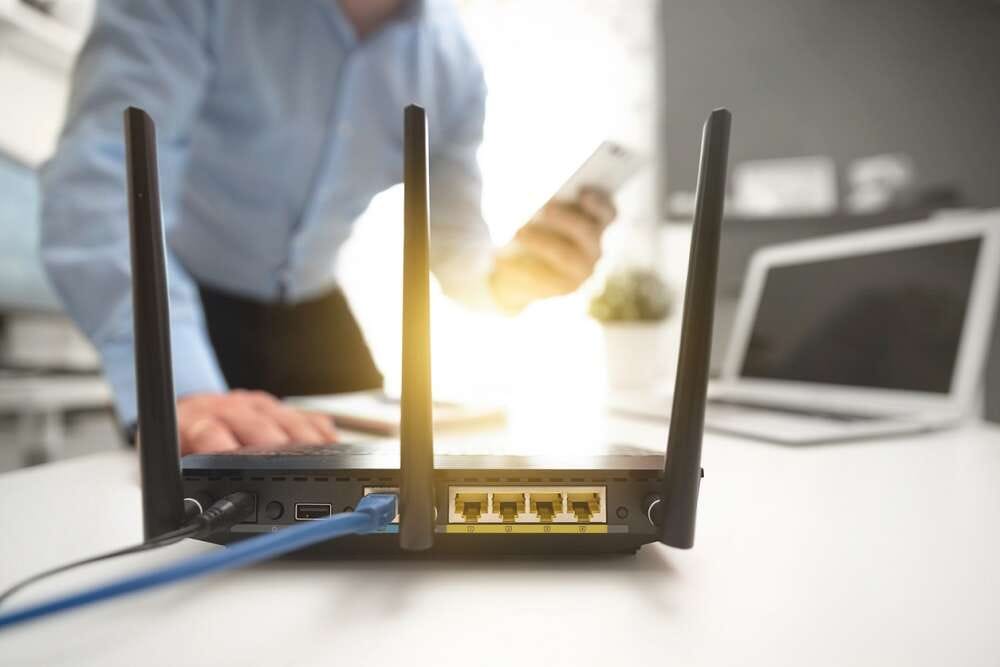
By Oliver Rowe, founder and CEO of Fusion Communications.

Oliver Rowe, Founder and CEO, Fusion Communications
Although government ‘work from home’ guidance has now been lifted, many businesses have chosen to adopt a hybrid way of working long-term, with employees splitting their time between home and the office.
As this trend continues, many networks are struggling to provide the same degree of internet reliability that is available in office settings. Access to a ready and reliable network connection is crucial, but unfortunately, a ‘digital divide’ has occurred, causing issues for home-workers across the country, with almost a third of UK properties not having sufficient internet speeds to engage, communicate and work effectively, according to Ofcom.
The problems encountered as a result of network reliability issues are numerous, from the inability to connect with colleagues on video calls and conferences, to emails and work documents sitting in outboxes, and in some cases, missed deadlines. Poor network speeds can also cause employees to feel frustrated and isolated, especially when they cannot connect with colleagues online. It may also lead them to worry that their professionalism will be judged due to the unstable connection that interrupts work communications and processes.
Employee network reliability issues should be addressed by employers, especially if it is affecting the smooth-running of the business. By doing so, it will not only benefit the employee, but the business as a whole, improving productivity, as well as colleague and client relations.
Here are a few ways employers can assist employees in resolving network reliability issues whilst remote working.
Requesting sufficient connection
Employees working in urban, suburban and rural locations that suffer with slow speeds have the legal right to request ‘decent’ broadband services, in line with Ofcom guidelines.
‘Decent’ is considered speeds of at least 10 Mbps for download and 1 Mbps for upload. However, this is not a quick solution, with most homes getting a better connection within 12 months, but it may take up to 24 for some.
If an employee chooses this route, as an employer, you should support their endeavours where possible, and aim to provide a temporary solution whilst they wait for their network upgrade.
Provide the right equipment
Companies wishing to take a more active role in helping improve their employees’ connectivity should look at the additional options available.
There are some key pieces of technology that can help improve employees’ internet connections whilst working at home. One option is a Wi-Fi extender – a portable device that connects to the existing Wi-Fi network and duplicates the signal, allowing employees to work further away from the router. There is also a Wi-Fi repeater – a device that is connected through an ethernet cable to the existing router, providing it with more power and capability, boosting both range and maximum transmission speed.
To determine the type of technology required, employers will need to assess the working patterns of their employees. For example, if an employee is working solely from home, they may benefit from a Wi-Fi repeater. However, if they are working in several different remote locations, a Wi-Fi extender may be better.
Use 5G mobile networks
As home broadband networks typically require wired transmission at some point, switching to the mobile network could be a better solution in addressing connectivity problems. Mobile coverage has improved significantly over the past few years, and it is only set to advance further through the continued rollout of next-generation 5G networks across the country.
Providing employees with 5G mobile networks means they can connect any time and in any place, increasing productivity and allowing greater flexibility. In addition to 5G mobile networks, 5G broadband has also seen an intensified rollout over the past year, and this could be quicker and cheaper to deploy than new wired networks.
If companies choose to roll out 5G for employees, they should ensure they have robust security measures in place, as well as conduct regular security audits and provide comprehensive training to employees on safety protocols.
Conclusion
Future working technologies are likely to be shaped by flexible, remote working. In fact, through our own research, we found that 40% of businesses have had to change their communications strategies to support remote working, which illustrates the need for new communications tools that are optimised for this working format.
To ensure effective hybrid or remote working, employers need to provide their workforces with the right tools to enable them to work efficiently, no matter where they are. Implementing more reliable network connections, like 5G is just one of the many tools available to companies to keep their workforces connected.


